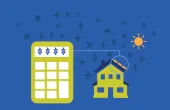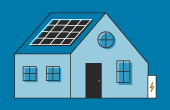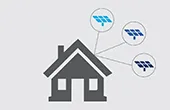September means one thing in the solar industry: Solar Power International (SPI). EnergySage sent a team to this year’s version of the industry’s largest trade show in Salt Lake City, where we reconnected with old partners, met many new ones, checked in on the last year of evolution on solar, and learned about where the industry is headed over the coming quarters or even years. Here are our primary takeaways from the show.
Continue readingHighlights from the ninth EnergySage Solar Marketplace Intel Report
This week, EnergySage released our ninth Solar Marketplace Intel Report™. The publicly available report provides data on the state of the solar market nationwide and at the state level. In this report, we introduced a number of new analyses, from a direct comparison of EnergySage quote data to installed cost data nationally, to a breakdown of the quality of equipment quoted and installed both on and off the EnergySage Marketplace. A couple of key takeaways are outlined below, and we look forward to your analysis and feedback on the report.
Continue readingSolar news: September 20th, 2019
In this week’s Solar News Roundup, the U.S. utility solar pipeline hits a new high watermark, and California boosts battery incentives for homes vulnerable to wildfire-caused power outages.
Continue readingCosts of solar after installation
For the most part, solar panel systems are “set it and forget it,” requiring very little (if any) maintenance over time – but what costs can you potentially encounter after installing your solar panel system? In this article, we’ll discuss four factors that could impact post-installation costs, and what you can do to avoid some of these costs from the get-go.
Continue readingBehind-the-meter: what you need to know
The electricity system is changing, from the way we generate power to the way we distribute and use it. All grid-tied energy systems are situated either “in front of the meter” or “behind the meter”, and as more and more electric customers take control of their production and usage, it is important to understand the fundamental differences between these two positions on the larger electric grid.
Continue readingSolar news: September 5th, 2019
In this week’s Solar News Roundup, Sunrun lands another virtual power plant deal and Connecticut sets its sights on eliminating fossil fuels by 2040.
Continue readingWhat happens if your solar inverter fails?
Solar energy systems are built to last and are designed to produce solar electricity reliably for 25 years or more. In some instances, though, individual components of a solar energy system may malfunction or break altogether. If you’ve installed solar, here’s what to do if your solar inverter fails.
Continue readingAC vs. DC solar battery coupling: what you need to know
Solar batteries are becoming popular additions to solar energy projects of all scales. When it comes to the way your solar panels, batteries, and inverters are all wired together on your property, there are two main options: alternating current (AC) coupling and direct current (DC) coupling. Both AC and DC coupling have advantages and drawbacks that are dependent on the specifics of your solar plus storage installation.
Continue readingHow much is your electric bill after going solar?
One of the most common misconceptions about solar is that people who install panels no longer receive an electricity bill from their utility company. This isn’t true in most cases: the majority of solar panel systems in the U.S. are grid-tied, allowing customers to draw electricity from the grid when their solar panels aren’t producing enough electricity.
Continue readingSolar news: August 23rd, 2019
In this week’s Solar News Roundup, Tesla launches a new solar rental model, and the energy storage market for California’s major utilities continues at impressive deployment rates, especially in SDG&E territory.
Continue reading




